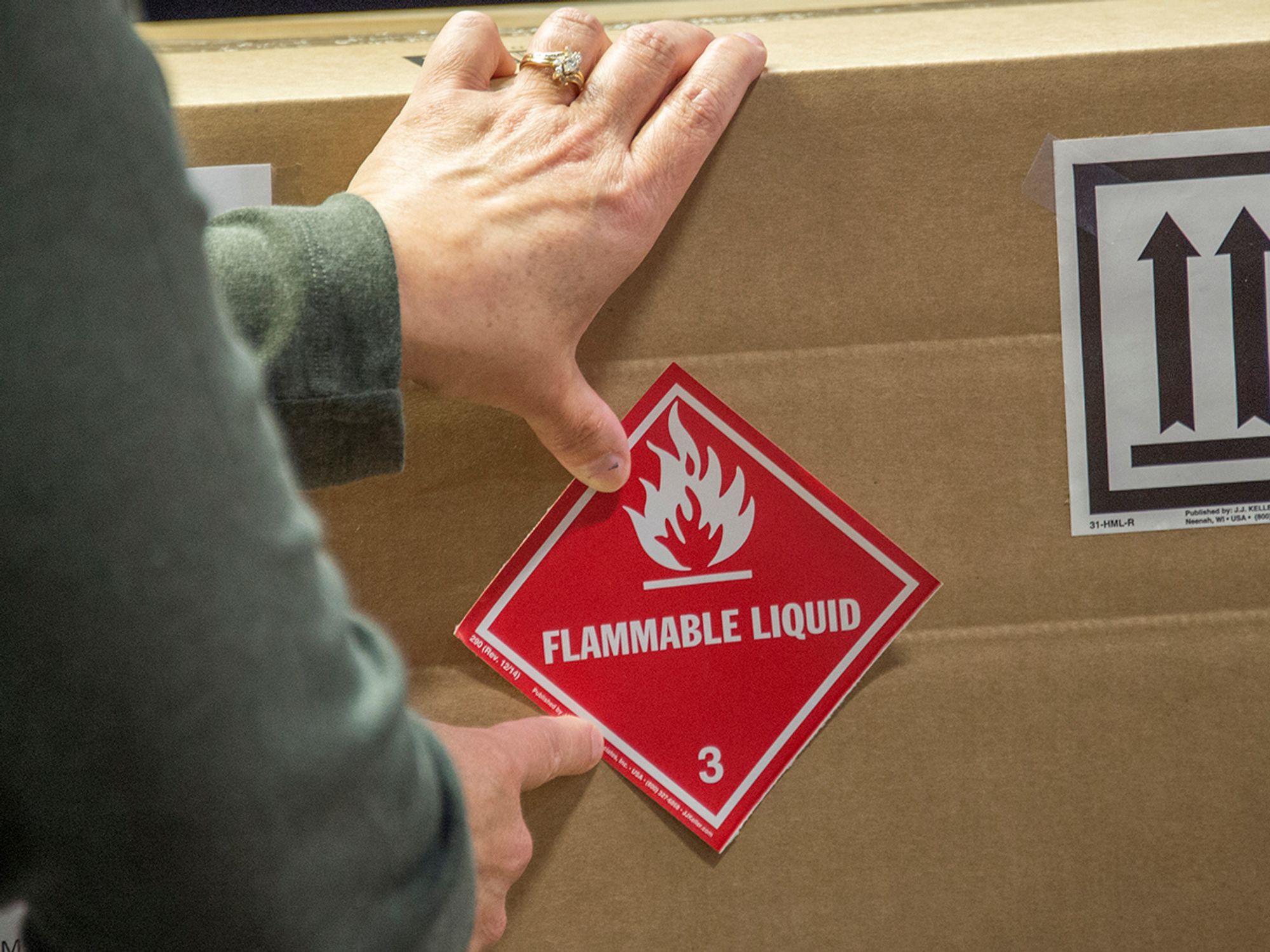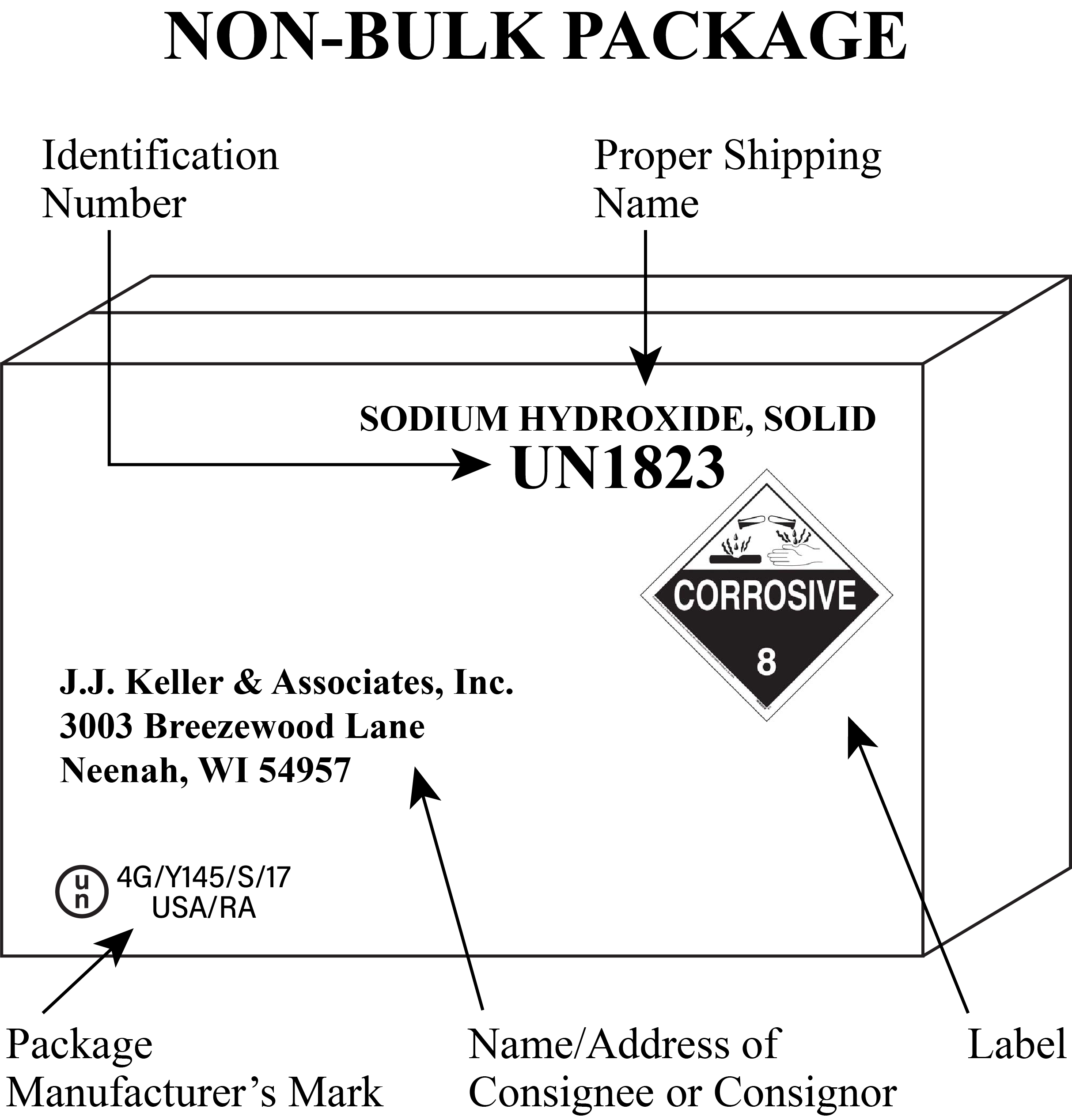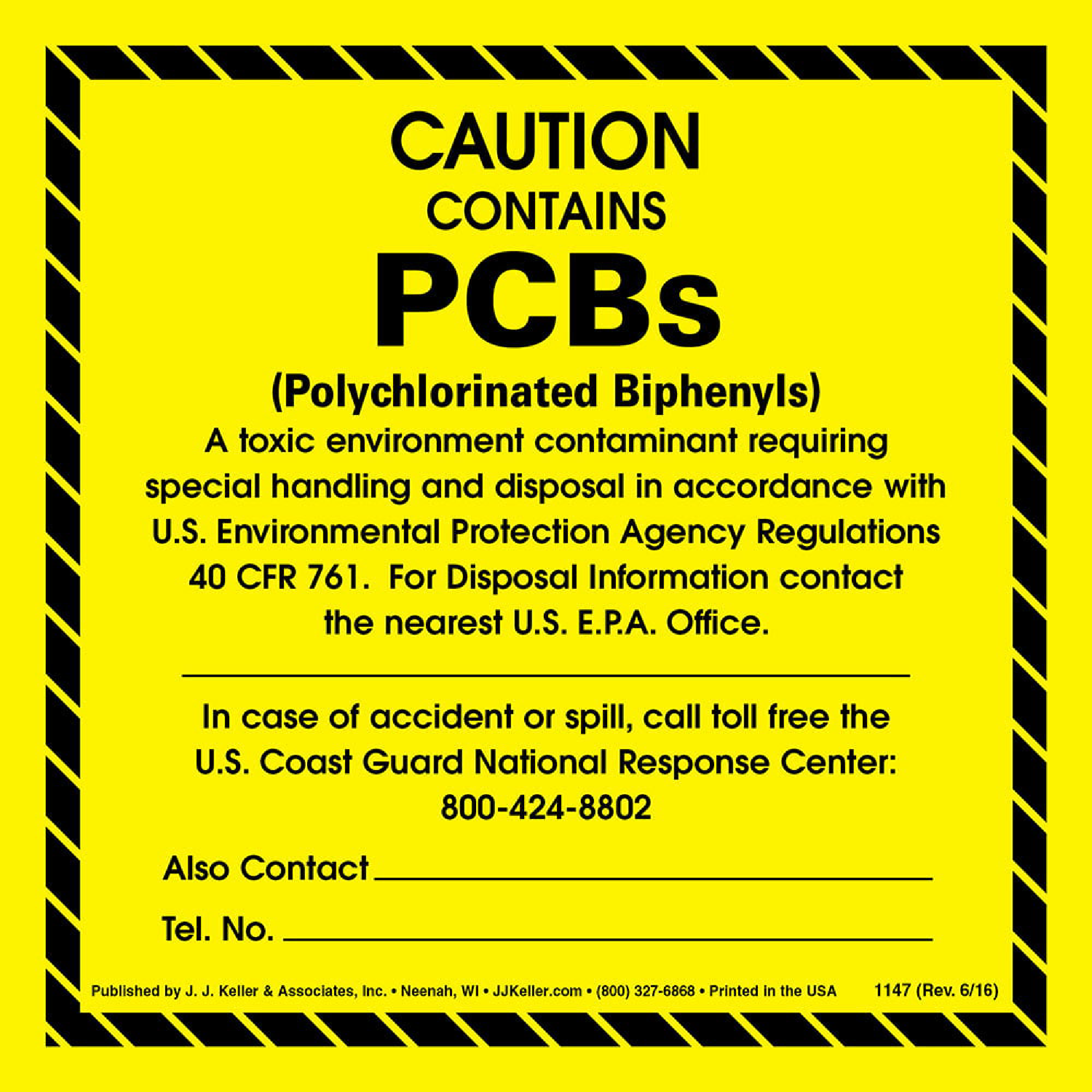Non-bulk markings

- Specific information is required on markings for non-bulk packages.
Most non-bulk packagings must be marked with the following information:
- Description/proper shipping name;
- Technical name(s), when required;
- Identification number (preceded by “UN” or “NA” or “ID,” as appropriate);
- Consignee’s or consignor’s name and address; and
- Special permit number preceded by DOT-SP, when required.

Description/proper shipping name (172.308)
The description/proper shipping name as shown in Column (2) of the Hazardous Materials Table must be marked on the non-bulk package.
Abbreviations are usually not allowed in a proper shipping name marking. The only exception includes abbreviations appearing as part of the authorized description in Column (2) of the Hazardous Materials Table, such as “TNT” or “PCB”.
Technical names (172.301)
Any package that contains hazardous materials described by a proper shipping name preceded by the symbol “G” in Column (1) of the Hazardous Materials Table must be marked with the technical name in parentheses in association with the proper shipping name. However, a technical name should not be marked on the outer package of a Division 6.2 material.
Identification number (172.301)
The identification number shown in Column (3) of the Hazardous Materials Table, for the description/proper shipping name being used must be marked on the package. The appropriate “UN,” “NA,” or “ID” prefix must be included.
Identification numbers marked on non-bulk packagings must meet specific size requirements. The identification numbers must be at least 0.47 inches (12 mm) high. On smaller packages—8 gallons (30 L) or less, 66 pounds (30 kg) maximum, or cylinders with a water capacity of 16 gallons (60 L) or less — the identification numbers must be at least 0.24 inches (6 mm) high. For even smaller packages with a capacity of 1.32 gallons (5 L) or 11 pounds (5 kg) or less, the size of the identification numbers must be appropriate for the package size.
Name and address (172.301)
The name and address of the consignee (receiver/buyer) or consignor (shipper/seller) must be marked on the package unless:
- The package is transported by highway only and will not be transferred from one motor carrier to another; or
- The package is transported as part of a carload lot, truckload lot, or freight container load, and the entire contents of the rail car, truck, or freight container are shipped from one consignor to one consignee.
Special permit packagings (172.302)
The special permit number is required to be plainly and durably marked on the packaging if it is authorized for use under a special permit. The package should be marked “DOT-SP (followed by the special permit number).”
Hazardous substances (172.324)
Non-bulk packagings that contain a reportable quantity (RQ) of a hazardous substance must be marked with the letters “RQ” in association with the proper shipping name.
PCBs (761.40, 761.45)
Polychlorinated biphenyls (PCBs) are hazardous substances that must be transported in compliance with the Hazardous Materials Regulations (HMR) and special additional requirements of the U.S. Environmental Protection Agency (EPA).
The HMR requires the proper shipping name, identification number, and RQ to be marked on each non-bulk package.

EPA regulations require the package to be marked with the PCB mark and a minimum size of 6 x 6 inches (152.4 mm x 152.4 mm). This PCB mark may be reduced proportionately to a minimum of 2 x 2 inches (50.8 mm x 50.8 mm) to fit on PCB articles or equipment.
An even smaller rectangular PCB mark may be used on small packages. This small rectangular PCB mark may be proportionately reduced to a minimum of 0.4 x 0.8 inches (10.16 mm x 20.32 mm) to fit on PCB articles or equipment.
EPA regulations also require a vehicle to be marked on each side and each end with this marking if transporting PCB containers that contain more than 99.4 pounds (45 kg) of liquid PCBs in concentrations of 50 to 500 ppm.
